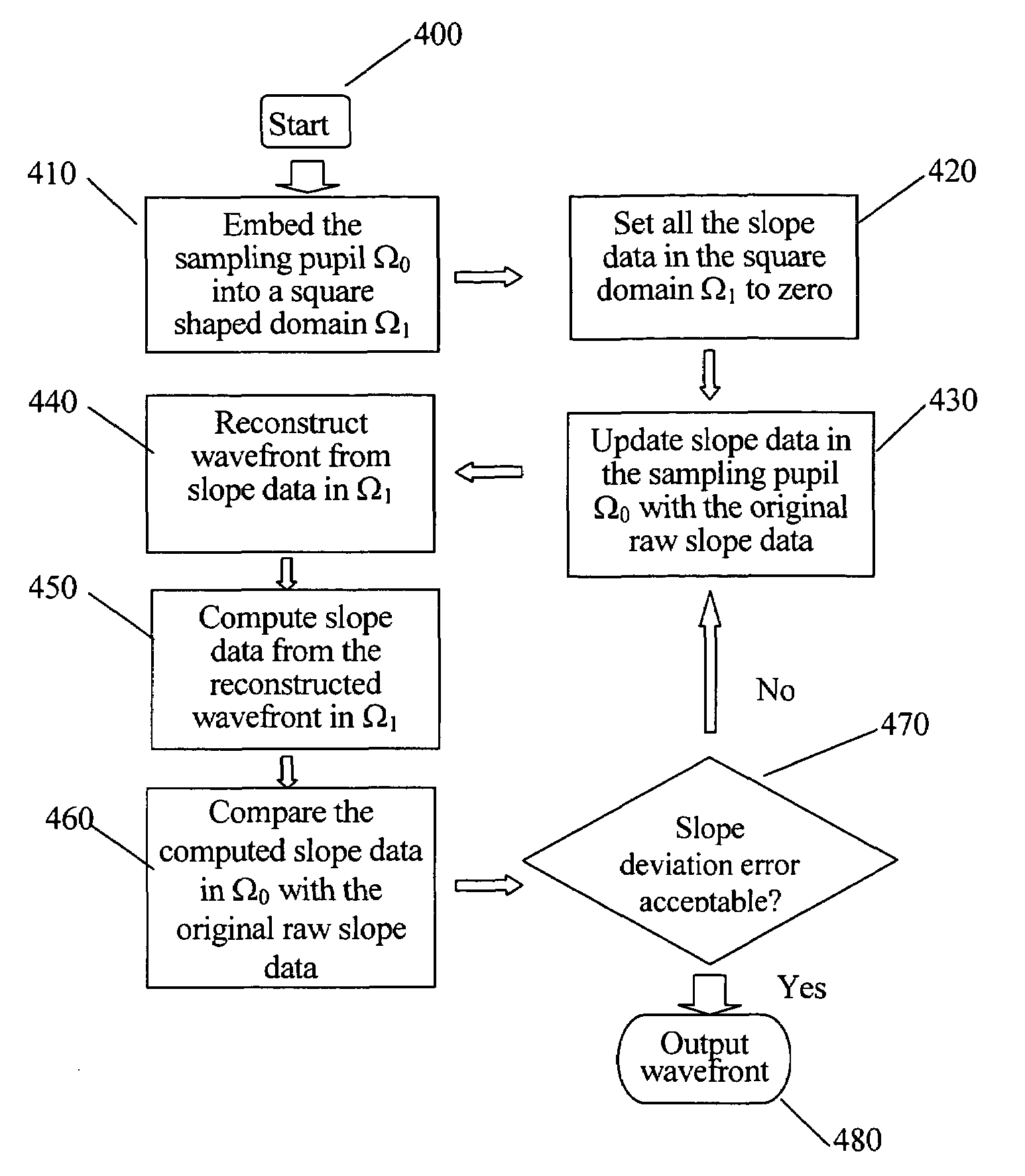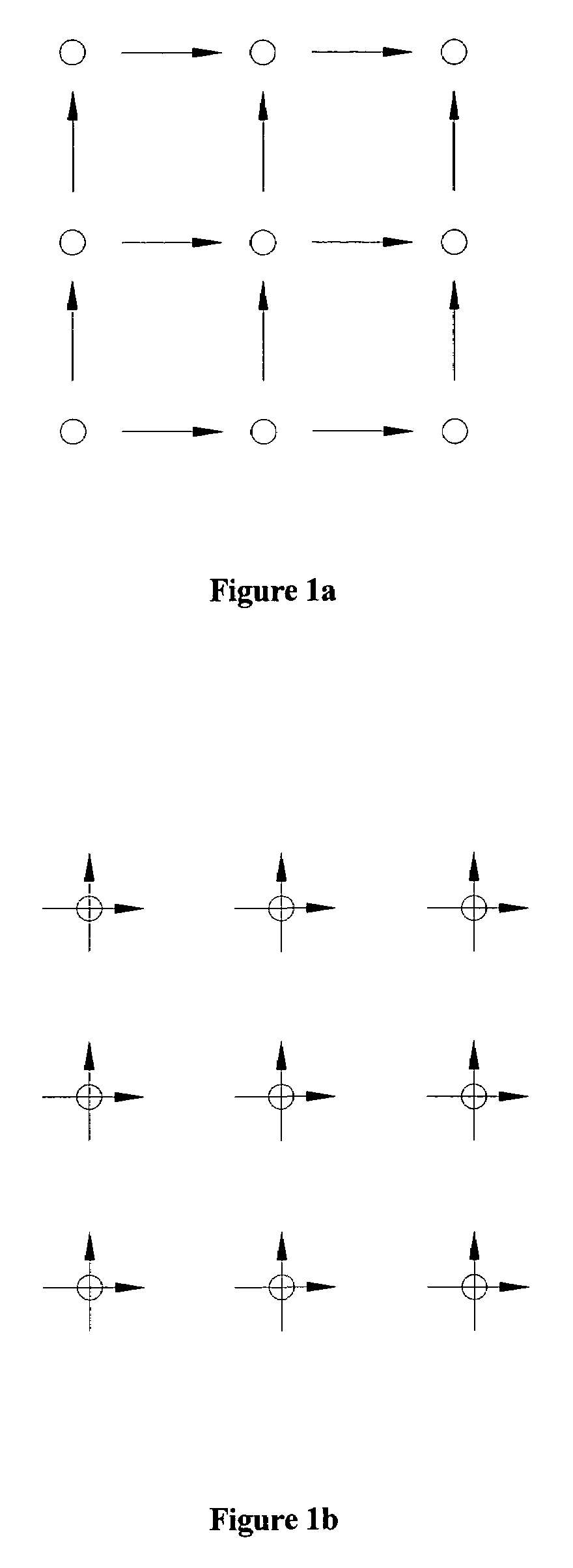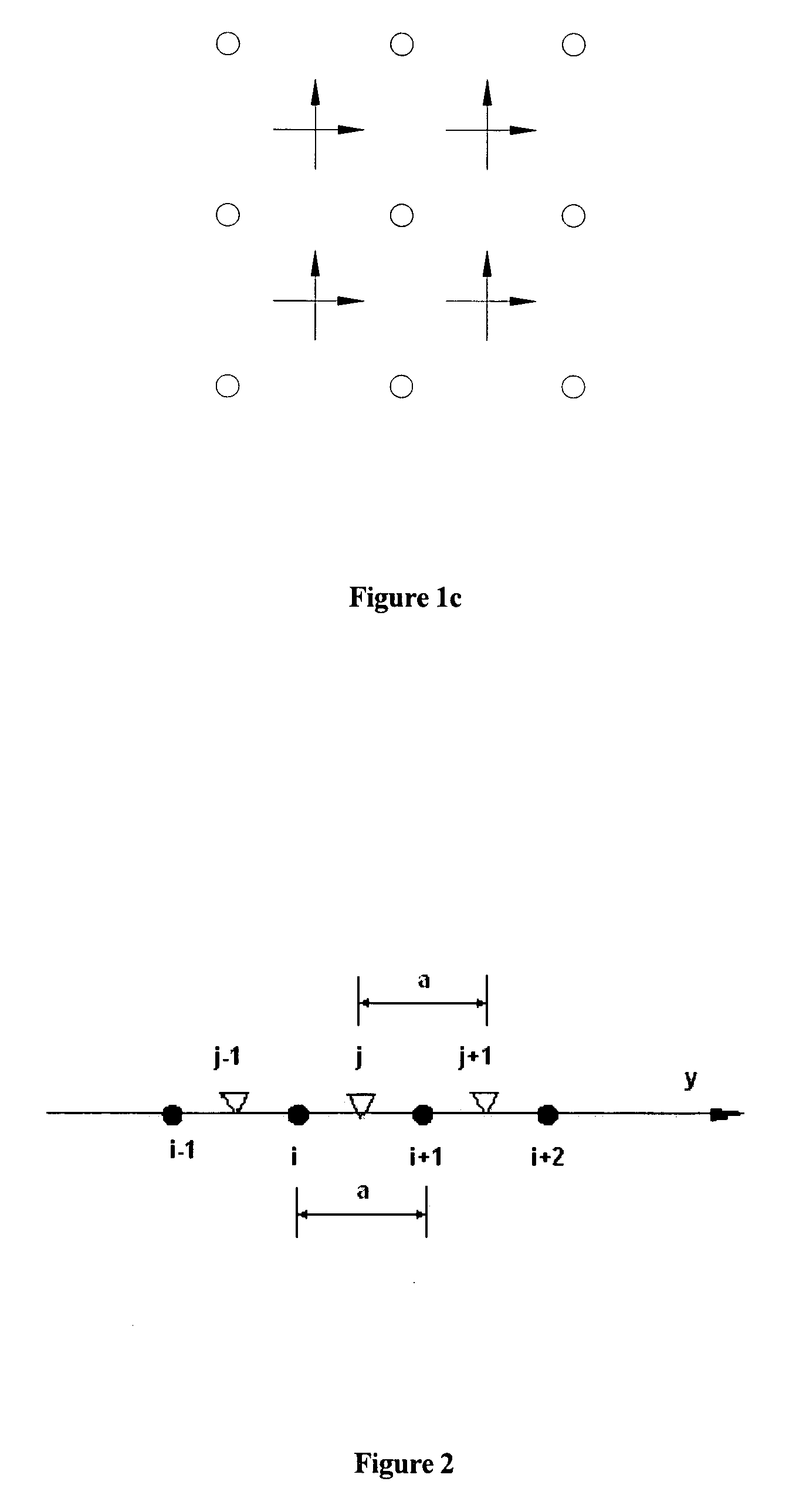Iterative least-squares wavefront estimation for general pupil shapes
- Summary
- Abstract
- Description
- Claims
- Application Information
AI Technical Summary
Benefits of technology
Problems solved by technology
Method used
Image
Examples
case 1
ular Pupil without Central Obstruction
[0104]A circular pupil without obstruction is a simply connected domain. The considered 30-mm diameter pupil with an array of 161 Shack-Hartmann grid points is shown in FIG. 6a. The points outside of the circular pupil in the square lattice are the imaginary grid points. The ground-truth wavefront is also shown in FIG. 6b. Deviation-error maps of the wavefront reconstructed by the Gerchberg-type iterative algorithm with several numbers of iterations (i.e. i=0, 1, 2, 3, 4, 13) are shown in FIGS. 7a–7f. Results show that for λ=632.8 nm, the RMS deviation errors were reduced from λ / 16 to λ / 129 after 13 iterations, where it reached its minimum.
case 2
ular Pupil with a 10% Central Obstruction
[0105]The 30-mm circular pupil with a 10% central obstruction is shown in FIG. 8a. Such a percent of obscuration is common for astronomical telescope mirrors. In testing such mirrors during the fabrication process and telescope assembling, an algorithm that enables testing of any pupil shape without any additional steps in preparing and setting-up for such test provides key advantages not only in time efficiency but also in minimizing the risk of test-induced errors. The ground-truth wavefront is shown in FIG. 8b.
[0106]Deviation-error maps of the wavefronts reconstructed by the Gerchberg-type iterative algorithm with several numbers of iterations (i.e. i=0, 1, 2, 3, 4, 10) are shown in FIGS. 9a–9f. Results show that for λ=632.8 nm, the RMS deviation errors were reduced from λ / 14 to λ / 154 after 10 iterations, where it reached its minimum.
[0107]The algorithmic convergence for the present invention is superior to the prior arts. The deviation e...
PUM
 Login to View More
Login to View More Abstract
Description
Claims
Application Information
 Login to View More
Login to View More - R&D
- Intellectual Property
- Life Sciences
- Materials
- Tech Scout
- Unparalleled Data Quality
- Higher Quality Content
- 60% Fewer Hallucinations
Browse by: Latest US Patents, China's latest patents, Technical Efficacy Thesaurus, Application Domain, Technology Topic, Popular Technical Reports.
© 2025 PatSnap. All rights reserved.Legal|Privacy policy|Modern Slavery Act Transparency Statement|Sitemap|About US| Contact US: help@patsnap.com



